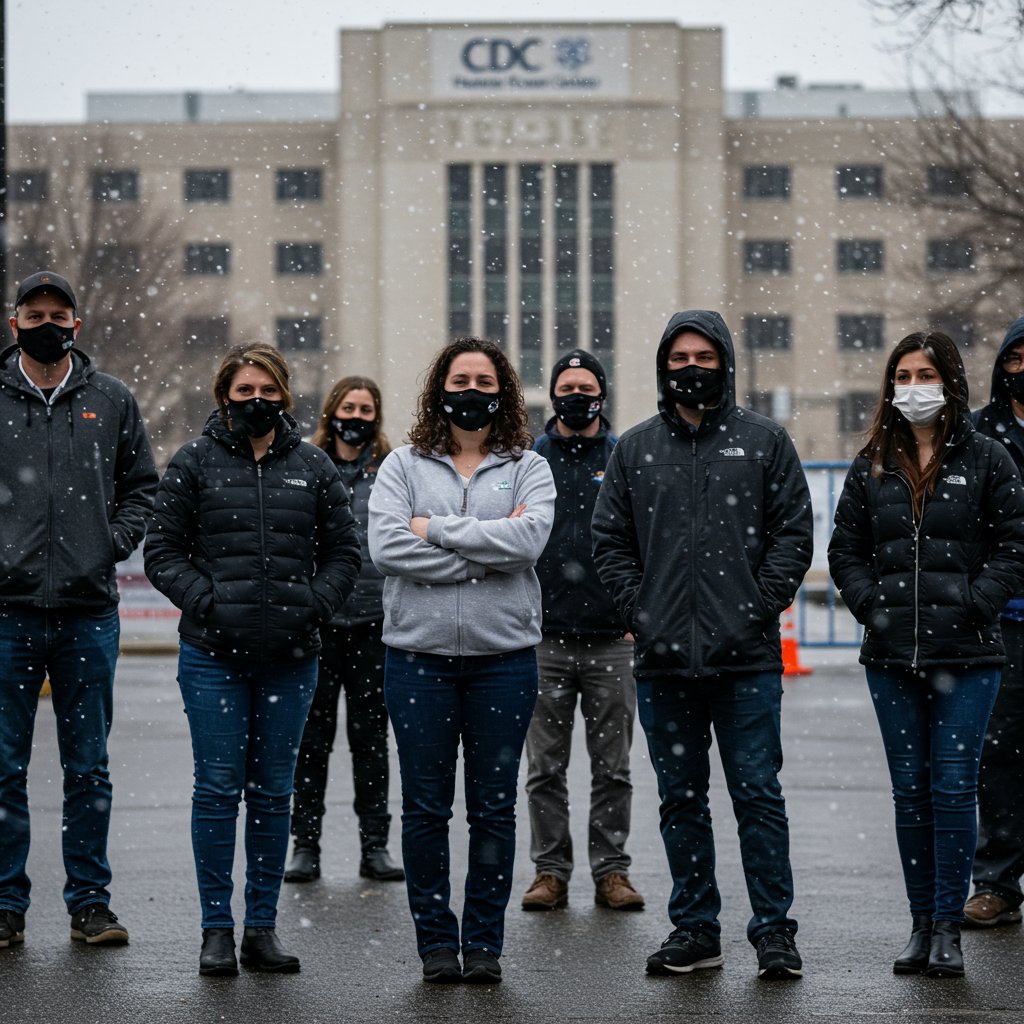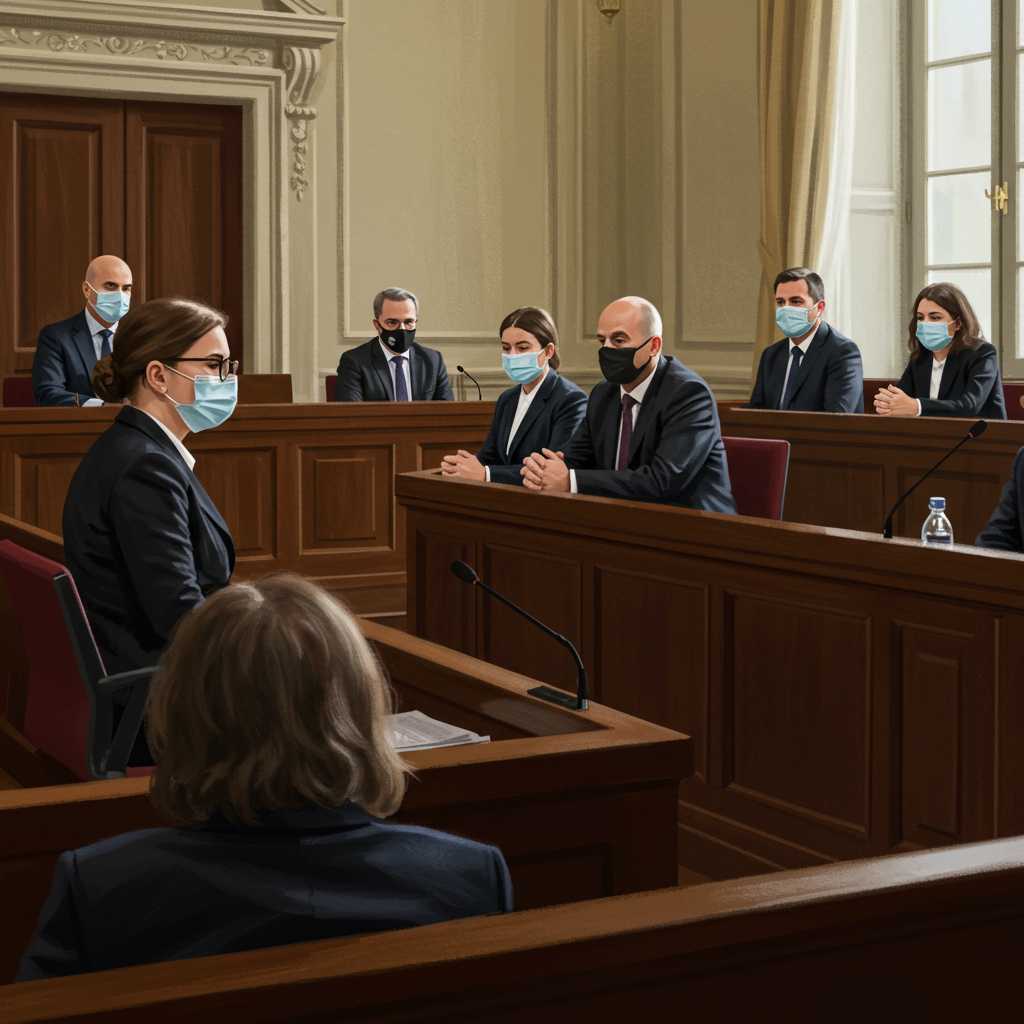Across the United States, frustration is mounting as access to crucial updated COVID-19 vaccines remains stalled, largely due to an unprecedented and unexplained delay from the Centers for Disease Control and Prevention (CDC). This federal inaction, especially concerning as the winter respiratory season looms, has left countless families and healthcare providers navigating a confusing landscape, sparking fears of a preventable public health crisis. The usual swiftness of federal health agencies in issuing immunization directives has been replaced by a perplexing silence, directly impacting the availability of shots for children and adults alike.
The Unprecedented Standstill in National Vaccine Rollout
The delay in official CDC guidance for COVID-19 vaccine administration is highly unusual, diverging sharply from the agency’s typical response time of days, often mere hours, in previous immunization efforts. This critical lag has ripple effects, most notably freezing the distribution of vaccines through the federal Vaccines for Children Program. This vital initiative, designed to provide free immunizations, currently serves approximately half of all U.S. children. Without the necessary CDC instructions, these essential shots cannot reach local health departments, doctors’ offices, or other providers, leaving millions of young people vulnerable.
Seattle mother Remy Sweeney-Garrett encapsulates this widespread anxiety. Worried for her two young daughters, particularly her 18-month-old susceptible to respiratory complications, Sweeney-Garrett expressed profound frustration over her inability to secure vaccinations for them. “I’m very worried, and frustrated,” she lamented, emphasizing a feeling that this crucial protection is “within the control of the people in our government.”
Frustration Mounts for Parents and Healthcare Providers
This maternal concern is echoed by pediatricians nationwide. Dr. Elias Kass, the Sweeney-Garrett family’s physician, highlighted the daily requests from parents eager to vaccinate their children against COVID-19. His clinic, like many others, finds itself without vaccine supply, nor any estimated arrival date. Dr. Kass expressed a grim sentiment, believing that “we as a society are blowing it” by failing to prevent avoidable suffering. This widespread unavailability and lack of information are creating significant confusion not only among the public but also within the healthcare community itself. Dr. Susan Kansagra, chief medical officer for the Association of State and Territorial Health Officials, described the situation as causing “a lot of confusion both among the public and even among providers around what the status is.”
A Patchwork of Rules Leaves Adults Vulnerable
The problem extends beyond children. Healthy adults seeking COVID vaccine access are also encountering a bewildering array of state-specific rules and regulations. While some states have proactively moved to simplify vaccine availability, many others continue to impose hurdles. This often means individuals must obtain a prescription or provide documentation of specific eligibility criteria. Consequently, pharmacists, who typically play a significant role in adult vaccinations, are frequently forced to turn away eligible individuals due to unclear guidelines or lack of authorization.
Dorit Reiss, an expert in vaccine policies at the University of California, San Francisco, bluntly characterized the situation as “a mess. And it’s an easily avoidable mess.” She critically stated that the lack of action would “harm public health and the result will be more COVID-19 and more harm from it.” The Department of Health and Human Services (HHS), the federal agency overseeing the CDC, did not respond to inquiries regarding the reasons behind the prolonged delay, leaving a critical information gap for the public.
Unraveling the Chaotic 2025 Vaccine Season
This year’s COVID vaccine rollout has been marked by an unusual level of disarray from its inception. Traditionally, individuals as young as six months could receive vaccinations from pharmacists without a prescription. However, a significant shift occurred this year when the Food and Drug Administration (FDA) initially approved the new COVID-19 shots exclusively for individuals deemed at higher risk for severe complications based on their age or health status. This change alone introduced widespread confusion and frustration among the general population seeking protection.
Further complicating the scenario was the involvement of the CDC’s influential Advisory Committee on Immunization Practices (ACIP). Reports indicated that the committee, under the purview of Health Secretary Robert F. Kennedy Jr., had seen an influx of “like-minded anti-vaccine members.” Following what was described as a “tumultuous two-day meeting,” ACIP put forth recommendations that simultaneously proposed a “new hoop” – requiring individuals to consult with a health professional before vaccination – while also suggesting measures that could broaden eligibility, empower more pharmacists to administer shots, and facilitate the long-awaited shipment of vaccines for children.
Critical Access Hinges on CDC Approval
Despite these ACIP recommendations, the CDC has yet to formally accept them. This inaction has effectively “froze everything in limbo,” as articulated by Dr. Kansagra. She underscored the gravity of the situation, explaining that the CDC’s acceptance is “a critical piece of enabling downstream access,” without which the entire vaccination process remains stalled. This administrative paralysis directly prevents millions from getting vaccinated, particularly as officials brace for a potentially severe winter respiratory season.
Looming Winter Threat and Government Shutdown Complications
The delays are especially alarming with the impending arrival of the winter respiratory virus season. Public health officials are acutely aware that while the exact severity of the upcoming season remains unknown, it “could certainly be very bad.” Dr. Philip Huang, director of the Dallas Health and Human Services department in Texas, voiced the profound challenges this places on local health authorities, stating, “It’s very frustrating. Our jobs are being made harder rather than easier.” The inability to readily provide vaccinations not only exacerbates public health risks but also diverts critical resources and attention away from other urgent health priorities.
Adding another layer of uncertainty to an already chaotic situation, a government shutdown has further complicated the timeline. With federal operations curtailed, there is no clear indication of when the CDC might finally act on the ACIP recommendations or what form its eventual guidelines might take. This administrative and political gridlock compounds the public health challenge, leaving health officials and the public increasingly anxious about the escalating risks of widespread COVID-19 illness.
What This Means for Public Health and Future Preparedness
The ongoing delay in COVID vaccine guidelines creates a dangerous precedent, potentially eroding public trust in federal health agencies during future crises. It underscores the critical need for transparent, timely, and consistent communication from authoritative bodies like the CDC. For individuals, navigating this uncertainty means staying vigilant and proactively seeking information from trusted local health departments, which may have limited guidance or resources in the absence of federal directives.
This situation also highlights the broader implications for public health infrastructure and pandemic preparedness. A swift, equitable, and clear vaccine rollout is paramount to mitigating disease spread and protecting vulnerable populations. When federal coordination falters, it places an undue burden on state and local health systems and leaves communities struggling to protect themselves. The current predicament is not just an administrative hiccup; it’s a significant barrier to health equity and a stark reminder of the importance of an agile and responsive public health system.
Frequently Asked Questions
Why is there a delay in COVID-19 vaccine guidelines from the CDC?
The Centers for Disease Control and Prevention (CDC) has experienced an unusual and unexplained delay in issuing official guidelines for updated COVID-19 vaccines, despite recommendations from its Advisory Committee on Immunization Practices (ACIP) weeks prior. This delay is attributed to the complex and chaotic nature of this year’s rollout, including initial FDA approval changes for eligibility and an internal review process that has frozen progress. Adding to the uncertainty, a government shutdown further complicates the agency’s ability to act swiftly.
Where can I find information on current COVID-19 vaccine eligibility in my state?
Due to the CDC’s delay, vaccine access and eligibility rules are currently a confusing patchwork of state-level regulations. To find the most accurate information for your area, it’s recommended to consult your local health department’s official website or contact them directly. Some states may still require prescriptions or specific eligibility documentation, and pharmacists might have varying authorization levels. This local inquiry is crucial while federal guidance remains in limbo.
What are the potential risks of delayed COVID-19 vaccine access for families?
Delayed COVID-19 vaccine access poses several significant risks for families. For children, particularly those eligible for the Vaccines for Children Program, the lack of guidelines means millions cannot receive protection, increasing their susceptibility to illness and respiratory complications. For both children and adults, the delays heighten the risk of severe illness, hospitalization, and potential long-term health consequences, especially as the winter respiratory season approaches. This inaction can also lead to increased community spread and strain on local healthcare systems.
Conclusion
The ongoing paralysis in issuing federal COVID vaccine guidelines represents a critical juncture for public health in the United States. The consequences—from anxious parents struggling to protect their children to frustrated adults navigating inconsistent state rules—are profound and far-reaching. As the winter respiratory season approaches, the urgent need for clear, actionable directives from the CDC becomes ever more apparent. This situation underscores the vital importance of federal agencies’ swift and transparent action to ensure equitable vaccine access and safeguard the nation’s health against preventable illness.




